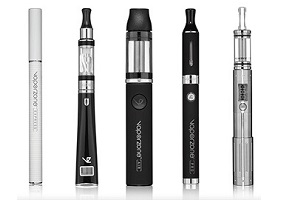Surfing the Internet is a very enjoyable thing to do, but in order to be able to this you need to choose the proper Internet speed that will allow you to do what you want or need to accomplish. Many people choose a slow connection, or in other words the Internet speed doesn’t match their requirements, and lose their heads over their poor Internet experience. Not only can opting for a slow connection cost you a lot of nerves, but it can also prevent you from playing your favorite online games without lag and viewing a video or movie without excessive buffering. This being said, here will be discussed all Internet speeds along with the reason what each of them is used for.
Choose Your Download Speed According to What You Need
Before discussing the various download speeds available to users, it is important to note that you need to decide what you will be using the Internet for. If you want to save money on your Internet service plan, you will need to choose the minimum speed that will allow you perform the tasks that you wish to do with relative ease. In other words, you should opt for a super fast Internet connection only if you plan on using the Net on a daily basis and for demanding tasks. For instance, if you want to download movies and your favorite music, 56 Kbps wouldn’t help you much with that, as this is the lowest Internet speed available.
Different Types of Internet Connections
Dial Up Internet
A very inexpensive Dial-up connection is usually adequate for people who don’t use the Internet very often, or for long periods of time. Instead, this type of IDM Latest Version connection enables their users to do some basic stuff online, and this may include sending and opening emails, and using search engines to find content. The maximum download speed for a dial-up connection is 56 Kbps, the upload speed is around 6 Kbps, and the price of this package is the lowest available to allow you to access the Internet.
DSL or Cable Internet Access
These two types of broadband Internet connections are very commonly used, and the difference between these two connections is that DSL service uses your standard copper phone lines to connect to the Internet, and the cable Internet, as it name suggests, uses a coaxial TV cable for its method of providing Internet access. Another thing is that the DSL connection is often more affordable than cable, but it generally has lower speeds. Namely, a DSL connection can provide users with the download speed of from about 768 Kbps up to 12 Mbps, whereas a common cable connection goes from 4 Mbps to 50 Mbps or higher. Some newer DOCSIS 3.0 cable Internet services boast ungodly fast Internet speeds in excess of 100 Mbps. Regardless of the fact that DSL is slower that the cable, a great many people manage to do everything they want with either of these types of connections. Downloading movies and music is only a small part of the activities that these two types of Internet connections can offer to their users.
Satellite Internet
This type of connection has gotten faster in recent years, but it is not as popular as most think it should be. Namely, the download speed related to this type of Internet connection can go up to 5 Mbps. However, it is not very affordable and the majority of people using a satellite Internet connection do so because DSL or cable is not available in their area. Many satellite systems also have low usage limits on the amount of data that you can use. When you exceed these limits the satellite provider slows your connection speed. Satellite systems are furthermore plagued with high latency due to the distances that the signals must travel. This delay causes problems for online gamers. Some ordinary things such as bad weather can also influence satellite connections, so if you need full-time access to the Net, then you should better opt for cable or DSL Internet service if it’s available.
Fiber Optic Connection
To compete with the cable Internet speeds and cable offerings such as HD television most DSL providers have started upgrading their services to ADSL2+. By using fiber optic cables the download speeds have been increased to 50 Mbps or more. The increased bandwidth also permits high definition digital television to be transmitted on the same connection as the broadband ADSL2+ Internet. Fiber Optic Internet is relatively new and only offered in select limited markets.






